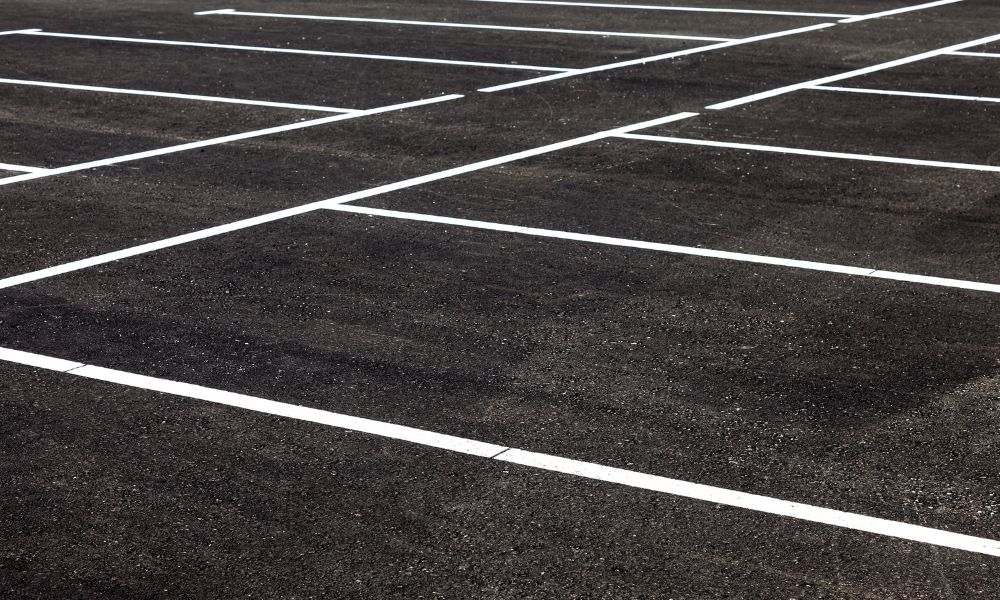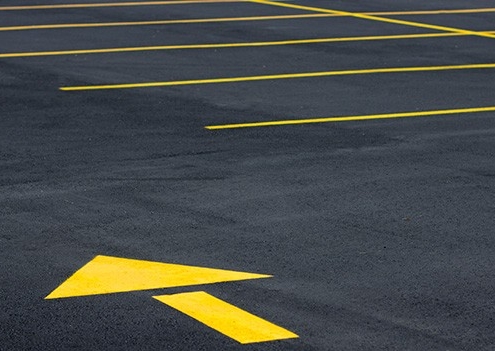Recognizing the Significance of Roadway Painting in Urban Infrastructure Advancement
The function of road paint in metropolitan infrastructure development extends beyond mere aesthetic appeals, functioning as a foundational aspect in improving security and maximizing traffic flow. Effective roadway markings not only give essential support for both chauffeurs and pedestrians yet additionally add to the overall functionality of metropolitan spaces. As cities evolve, the combination of ingenious designs right into road paint can considerably influence neighborhood characteristics and ecological sustainability. However, the question stays: how can metropolitan coordinators balance these varied purposes to produce truly efficient and appealing streets?
Security Enhancements Through Road Markings
Frequently forgotten in urban infrastructure advancement, roadway markings play an essential duty in improving safety and security for both pedestrians and motorists. These markings serve as necessary visual cues that lead lorry motion and develop order on roads. Correctly made and preserved road markings interact vital details, such as lane limits, pedestrian crossings, and stop lines, properly reducing the probability of accidents.
The presence and clearness of road markings are critical, specifically in negative climate condition. Reflective paints and high-contrast materials help make sure that markings continue to be noticeable at night and during rainy conditions, thus improving security end results. Moreover, the application of standard icons, such as arrows and pedestrian symbols, promotes much better understanding amongst road customers, promoting conformity with web traffic laws.
Along with their practical facets, road markings add significantly to the general visual of urban atmospheres. Well-executed road painting boosts the visual appeal of streetscapes while concurrently reinforcing the significance of roadway safety and security. As cities continue to expand and evolve, prioritizing the top quality and maintenance of roadway markings is necessary in cultivating a efficient and risk-free transport system for all individuals.
Effect on Web Traffic Circulation
Optimizing web traffic circulation is dramatically influenced by the strategic implementation of roadway markings. Correctly designed and preserved roadway markings offer vital support for drivers, assisting in smoother navigation through numerous web traffic circumstances. By plainly delineating lanes, suggesting turning points, and noting junctions, roadway markings assist lower confusion and stop accidents, ultimately enhancing total traffic effectiveness.
In addition, road markings play a critical duty in controling vehicle speeds. As an example, using lane reduction markings and speed up limit indications can influence vehicle driver behavior, motivating adherence to safe driving practices. This, consequently, mitigates blockage and promotes an extra fluid activity of cars.
In addition, well-placed road markings can enhance the performance of traffic signals and signs. By making certain that these aspects are visually enhanced through proper pavement markings, motorists get constant and systematic details, enabling more educated decision-making.
In metropolitan environments, where website traffic density is high, the combination of sophisticated road painting methods, such as thermoplastic and reflective products, can even more enhance exposure under various weather. In recap, efficient road markings are important for optimizing traffic circulation, adding to more secure and extra effective city transport systems.
Sustaining Pedestrian Navigation
Effective road markings are crucial for sustaining pedestrian navigating, particularly in urban locations where foot web traffic is significant - Parking lot line striping. Clear, well-defined crosswalks, directional arrows, and pedestrian signs improve presence and overview pedestrians safely across roadways. These markings inform pedestrians of their right-of-way, minimizing the chance of mishaps and improving overall security
Additionally, effective roadway paint can mark different areas within the urban setting, such as separating pedestrian courses from lorry lanes. This delineation cultivates a safer strolling experience, motivating enhanced foot web traffic and promoting metropolitan vitality. Markings that mark pedestrian-only locations or shared areas even more boost navigation by clearing up where pedestrians can securely traverse without disturbance from cars.

View Line painting Abbotsford in a full screen map
Aesthetic Contributions to Urban Style
The aesthetic payments of roadway paint dramatically enhance metropolitan design, transforming average streets right into aesthetically engaging areas. Attentively created road markings and dynamic shades develop a visual narrative that can reflect the identity of a neighborhood. Creative crosswalks, as an example, not just offer their practical objective but additionally work as public art setups, encouraging community communication and satisfaction.
Moreover, the tactical use color can affect understandings of security and availability. Brilliantly repainted bike lanes and pedestrian zones can define areas, making them more appealing and encouraging their usage. This, subsequently, fosters a feeling of neighborhood by promoting active transport settings, such as strolling and cycling.
Furthermore, roadway paint plays a critical role in urban revitalization initiatives. Eventually, the visual payments of road paint are crucial for the development of vivid, livable city spaces that reverberate with the neighborhood's character and goals.
Ecological Factors To Consider in Roadway Paint

To reduce these concerns, the fostering of environmentally friendly alternatives is vital. Water-based paints and those made from lasting products help decrease VOC emissions and boost total environmental impact. Furthermore, polycarbonate and reflective markings can improve presence while decreasing the necessity for frequent repainting, thus minimizing product consumption over time.
Furthermore, road painting can be incorporated with urban eco-friendly efforts, such as utilizing permeable materials that allow rain to penetrate, thus decreasing see this page drainage and advertising groundwater recharge. In recap, while roadway paint is crucial for urban performance, page it is important that environmental factors to consider guide product choice and application approaches to make certain lasting metropolitan development.
Conclusion
In verdict, road paint plays an essential duty in city facilities growth by improving safety and security, enhancing traffic flow, and supporting pedestrian navigating. Furthermore, focus to environmental factors to consider in roadway painting contributes to lasting urban growth.
